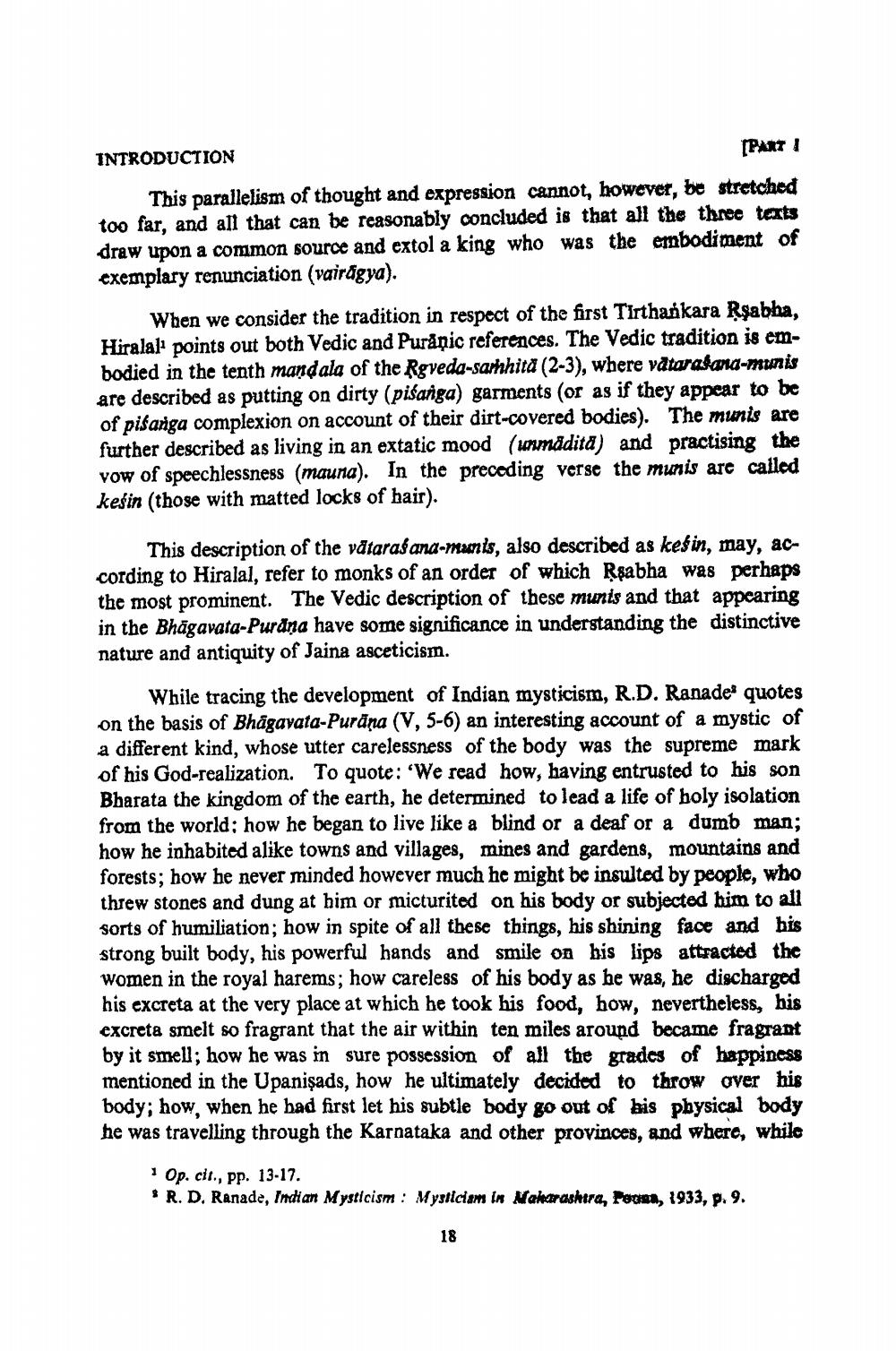________________
(PART 1
INTRODUCTION
This parallelism of thought and expression cannot, however, be stretched too far, and all that can be reasonably concluded is that all the three tats draw upon a common source and extol a king who was the embodiment of exemplary renunciation (vairágya).
When we consider the tradition in respect of the first Tirthaskara Rşabha, Hiralal: points out both Vedic and Purånic references. The Vedic tradition is embodied in the tenth mandala of the Rgveda-sanhita (2-3), where vataratana-munis are described as putting on dirty (piśanga) garments (or as if they appear to be of pisarga complexion on account of their dirt-covered bodies). The munis are further described as living in an extatic mood (unmädita) and practising the vow of speechlessness (mauna). In the preceding verse the munis are called kesin (those with matted locks of hair).
This description of the våtarafana-mants, also described as kesin, may, according to Hiralal, refer to monks of an order of which Rşabha was perhaps the most prominent. The Vedic description of these munis and that appearing in the Bhāgavata-Purdna have some significance in understanding the distinctive nature and antiquity of Jaina asceticism.
While tracing the development of Indian mysticism, R.D. Ranades quotes on the basis of Bhagavata-Puräna (V, 5-6) an interesting account of a mystic of a different kind, whose utter carelessness of the body was the supreme mark of his God-realization. To quote: 'We read how, having entrusted to his son Bharata the kingdom of the earth, he determined to lead a life of holy isolation from the world; how he began to live like a blind or a deaf or a dumb man; how he inhabited alike towns and villages, mines and gardens, mountains and forests; how he never minded however much he might be insulted by people, who threw stones and dung at him or micturited on his body or subjected him to all sorts of humiliation; how in spite of all these things, his shining face and his strong built body, his powerful hands and smile on his lips attracted the women in the royal harems; how careless of his body as he was, he discharged his excreta at the very place at which he took his food, how, nevertheless, his excreta smelt so fragrant that the air within ten miles around became fragrant by it smell; how he was in sure possession of all the grades of happiness mentioned in the Upanişads, how he ultimately decided to throw over his body; how, when he bad first let his subtle body go out of his physical body he was travelling through the Karnataka and other provinces, and where, while
* Op. cit., pp. 13-17. * R. D. Ranade, Indian Mysticism : Mysticiam in Maharashtra, Peginn, 1933, p. 9.
18




